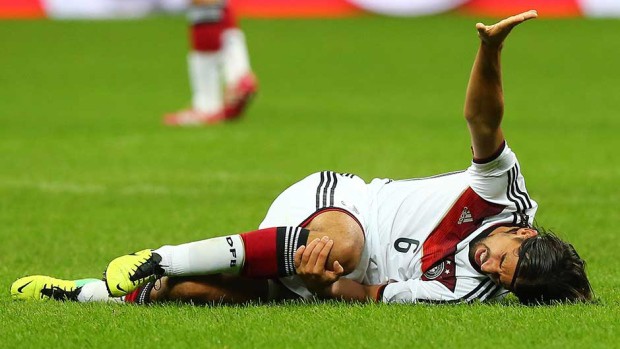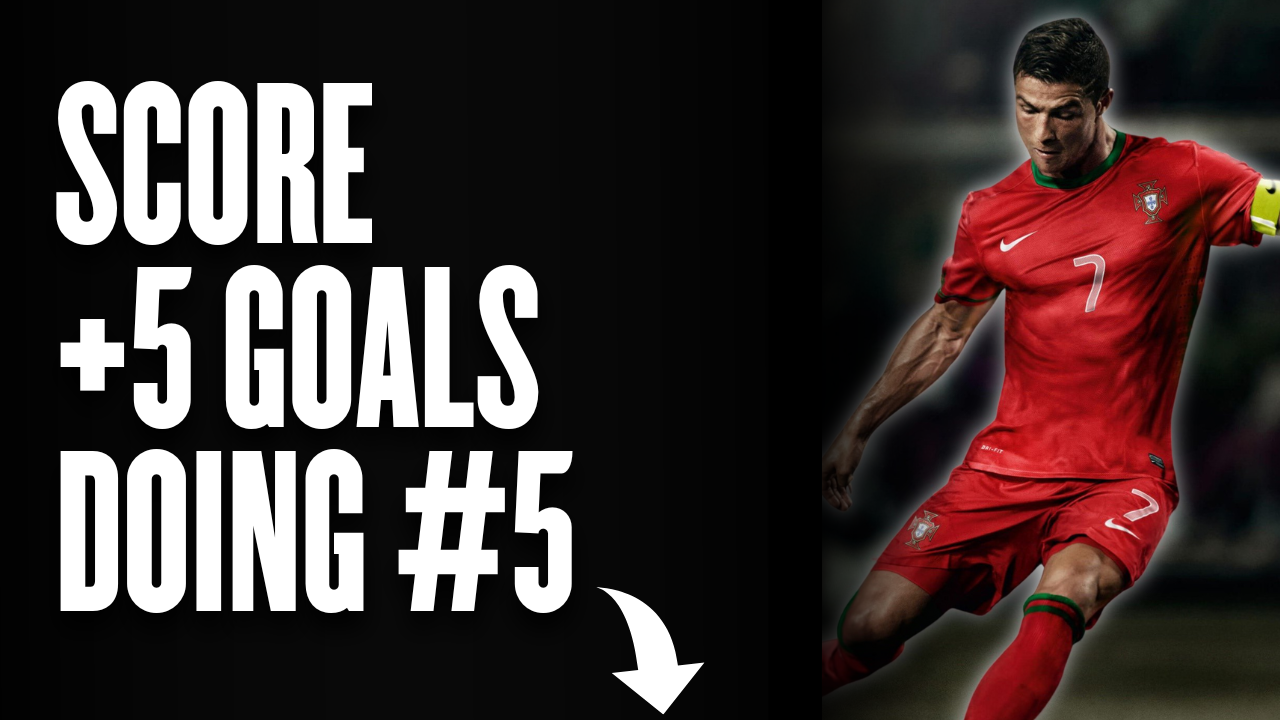
Reducing The Risk Of Injury In Football/Soccer
Injuries, whether minor or major, are a very common phenomenon in the lives of athletes, especially footballers. Football is a contact sport with many physical requirements. Also, the fact that it takes place outside, leaves the footballer exposed to any “risk” such as neglected pitches and lack of equipment (especially in lower tiers due to the lack of financial resources).
In addition, the strain on the body due to the weekly competition obligations and the (almost) daily high-intensity (and contact) training make the sport of football a sport with high injury rates. Indicatively, research has shown that within a season a team of 25 players can expect up to 50 (!) injuries. [1]
Having such data in our hands, helps us understand that reducing the risk of injuries is something absolutely desirable for all players and technical staff. On the one hand, you will preserve and enrich your career with game and training time and on the other hand, you will serve the interests of the team.
RELATED: Injury Prevention – Myth or Reality? | Everything You Need To Know
INJURY CAUSES
The reasons why a footballer suffers an injury vary. You see, injuries are multi-factorial and are not just due to one weakness. For this reason, I avoid talking about injury prevention and instead, refer to reducing the risk of injury. Injuries are divided into two main categories:
- Contact Injuries
- Non-Contact Injuries
and depend on factors such as:
- Material equipment (e.g. cleats with wrong stud configuration)
- Facilities (e.g. soft playing field)
- Flaws in movement patterns (e.g. wrong change of direction mechanics)
- Violent clash with an opponent (e.g. tackle)
- Improper physical conditioning (e.g. poor VO2 Max)
- Aggravated medical history (e.g. previous injuries / existing illnesses)
- Poor programming (load / intensity)
- Poor nutrition / sleeping / recovery quality
So let’s look at the factors we CAN control to “prevent”, or better yet reduce the chances of an injury, both contact, and non-contact injuries.
TRAINING
The importance of exercise in reducing the risk of injury is enormous. Common sense says that if a footballer does not have the physical abilities at the level of his teammates and consequently the tier in which he plays, then he will not be able to KEEP UP with his competitive obligations and therefore, the chances of getting injured dramatically increase.
With this in mind, our training, whether on or off the field, should include a range of suitably structured and programmed features that cater to the individual needs of the player.
Please note that the category “injury prevention exercises” does NOT exist. ALL exercises, however, performed with the right motor patterns, with the right guidance, and with proper programming (repetitions, sets, velocity, etc.) contribute to the goal of reducing the risk of injury.
Stop looking for “what” (exercises) and instead focus on “how”, “when” and “why”.
Below, you will find some key points to decrease the probability of suffering an injury:
- Develope the right movement patterns (the earlier the better)
- Emphasize the technique/form of execution and not the weight / resistance used
- Programming targeted around the player’s profile (strengths / weaknesses)
- Reduction of muscle imbalances (and not always precise balancing)
- Training goals should reflect the goals of the season (in / off / pre-season)
MEDICAL / SPORTS TESTS
Unfortunately, many footballers and coaching staff neglect the importance of getting medically, physically, and mentally tested. Every footballer should have his/her own medical and sports background. Visits to doctors, diagnostic centers, physiotherapists, and ergometry centers should be done regularly.

*As an affiliate, I'm earning from qualifying purchases without any extra charges being placed on you.
Having the complete profile of the athlete’s health and performance makes injury risk reduction an easier process. In turn, the profile of the sport will guide us on the right paths of proper programming.
Below, you can find a series of medical and sports tests to which would be good for you to undergo at least once a year for precautionary reasons:
- Blood test (beginning of the season – 1 to 2 times a year)
- Electrocardiogram (beginning of the season – 1 to 2 times a year)
- General examination by an orthopedist / physiotherapist in “problematic” points (end of the season – before the beginning of the transitional period)
- Evaluation of movement patterns
- Testing VO2 Max
- Power Assessments (Squat Jump, Countermovement Jump, Drop Jump, etc.)
- One-Rep-Max testing (1RM)
- Testing various physical abilities (specific to the sport)
NUTRITION
The athlete’s diet undoubtedly plays an important role in reducing the risk of injury. A healthy, balanced, and personalized diet contributes greatly to the recovery of the footballer. The better the trainee’s recovery, the lower the chances of injury due to overtraining.
In addition, a well-nourished body works better and therefore injuries due to poor motor patterns can be avoided. This is especially noticeable in the last stages of the game, during which the movement patterns become poor due to fatigue. In these cases, the consumption of carbohydrates, electrolytes, and water throughout the duration of the match (especially at halftime) is highly recommended.
RELATED: Sports Drinks – Hypotonic, Isotonic, Hypertonic | What’s The Difference & How To Make One At-Home
RECOVERY
The recovery process is an issue that’s also very underestimated amongst athletes and team staff. Many teams and especially footballers ignore the basic recovery protocols with the excuse that “they do not have the right means” as most professional footballers do. The truth is that you do NOT need money or additional recovery equipment for 80% -90% of your recovery. The remaining 10% -20% can be covered with a small budget and a little willpower.
So focus on the basic recovery methods, i.e. sleep and nutrition, and then dedicate yourself to secondary ways of recovery such as foam rolling, mobility routines, ice/contrast baths and set aside excuses like “I do not have a massage gun / a physiotherapist next to me 24/7 ”etc.
“NO EXCUSES.”
If you want to know more details about the basic and supplementary regeneration methods, then click on them to learn everything you need to know.
In other words, proper recovery helps you reduce injury risk by making you feel more ready and fresh as well as to perform more efficiently!
In summary, we can say that the goal of reducing injuries is a goal that requires a variety of actions and is not based on a limited prescription of exercises that some (incorrectly) call “injury prevention exercises”. Reducing injuries over the course of your career is an ongoing process that requires you to be proactive. The results will depend on how well you manage yourself on a personal level, both on and off the field.
Invest and sacrifice time, effort, and even money if you’re able to (NOT needed at all tho!) to make the most out of your career and achieve your fullest potential.

*As an affiliate, I'm earning from qualifying purchases without any extra charges being placed on you.
“A SINGLE EXERCISE DOESN’T PREVENT AN INJURY. THE SUM UP OF YOUR ACTIONS THO, CAN DRASTICALLY MINIMIZE THE RISK!”
RELATED ARTICLES
- Basic Recovery Protocols For Football/Soccer Players
- Supplementary Recovery Methods Used By Footballers
- Injury Prevention – Myth or Reality? | Everything You Need To Know
- How To Balance Workouts & Training As A Football Player
- Muscle Cramps In Football – This Is How To Get Rid Of Them
- Shin Splints In Football – Everything You Need To Know
- Is Static Stretching Bad For Football Performance?
- Is Static Stretching Bad For Football Performance?




